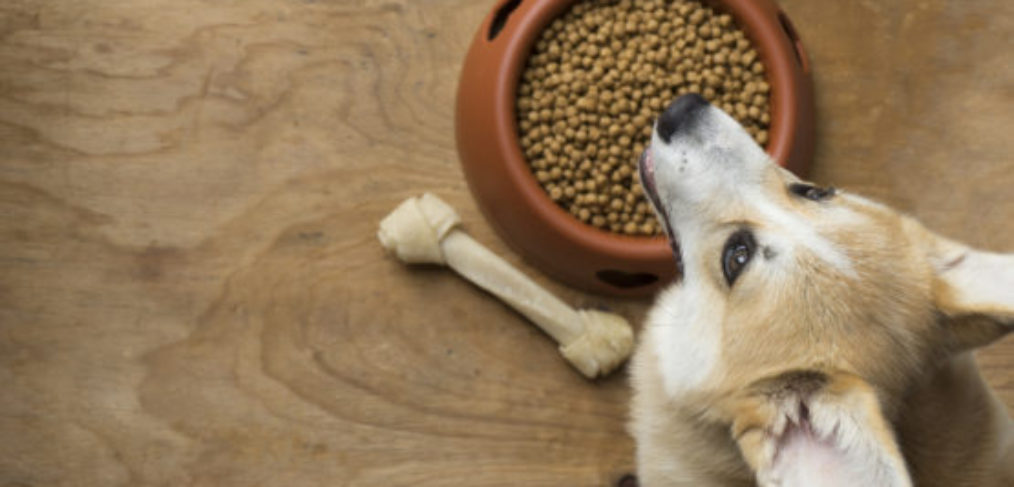Gut Health for Dogs: What Are You Feeding Him?

In humans, disease starts in the gut. This isn’t likely a new flash to you and chances are even if you haven’t delved much into the research proving this to be true, at the very least you’ve probably at least heard of phrases such as leaky gut, the gut microbiome and gut disbyosis.
But did you know it’s not always traceable simply back to eating a diet, such as the typical Standard American Special?
And sadly, the Standard American Diet does not only pertain to those of us who are bidpedal; it applies to dogs, too.
Have a look at the picture above.
Little brown pellets.
Even the most premium little brown pellets are still…. little brown pellets.
So if you’re reading this and you’re eating real food, are you still giving your dog not food?
So many people wait until their dogs are fat and sick to change their diet (sound familiar?) because they feel it will be too complicated to make their food, take too much time or be too expensive (again- sound familiar?).
How much of a role does what we feed our dogs factor into how healthy they’ll be?
Studies show that in humans, gut health (or lack thereof) starts at birth, and that children born via Caesarian section are more likely to develop gut issues later in life.
After listening to a recent podcast in which Dr. Alessio Fasano (1) was interviewed on the topic of the gut microbiome and how it affects our health, one of the many things that piqued my interest was this very comment.
Not just how it may pertain to humans, but I wondered if there was a correlation between that and canines?
I did a bit of research online and while I came up with study after study validating the correlation between a healthier gut in human babies that were born naturally than those delivered via C section, I didn’t encounter anyting pertaining to canines.
Why was I interested in this?
For personal reasons.
Our two dogs, Preston and Pele, are 2 and 1 years old, respectively.
They’re not from the same litters and Preston was delivered via C-Section as his mother went into labor three days prior to her due date under emergency conditions.
While we don’t know exactly what happened, it was interesting to me to note that often, he doesn’t tolerate the very food I make for Pele. He tends to be more prone to stomach upset and general GI distress than his sister.
Just not finding research on the topic was no good reason not to create a gut-healing protocol for him which, in all honesty, isn’t even that different from what I was already feeding them,
With the guidance of Dr. Pitcairn’s book, it’s been easy enough to learn how to make pet food ensuring all the micro and macros were intact, far beyond just feeding them ground beef and hoping that was all it takes.
All that was left was to incorporate bone broth and probiotics.
Things have improved.
Could there be more that we could incorporate?
Probably, but given that he’s healthy, loves his food, is lean and active, not to mention that I don’t know if there even is a dog equivalent of some of the more comprehensive health testing platforms for humans, I’ll just keep using the empirical approach!
The bottom line is that while it may take you less than a minute to ‘feed’ your dog by way of pouring those little brown pellets into his or her bowl, in all honesty, it doesn’t take all that long to do a weekly prep of whole, real food (which you can then freeze in portions) for your dog.
Yes, it will be more expensive than grocery store kibble, but just as it is with humans, we either pay slightly more for the cost of real, fresh and organic in order to stay healthy and disease free, or we pay far more, and not just in dollars, for the ramifcations of what happens when we consume things that simply are not food.
(1) https://www.ihmc.us/stemtalk/episode-20/





